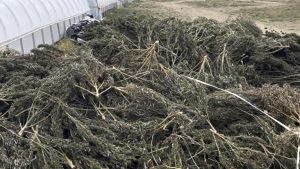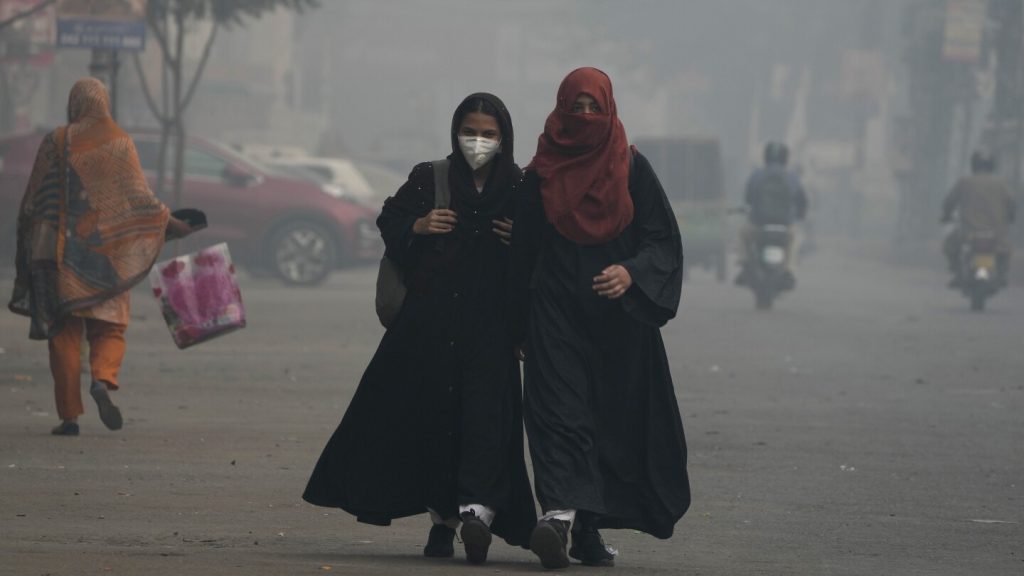As air pollution in Pakistan’s Punjab province reaches record-high levels, authorities have taken drastic measures to protect residents from the hazardous conditions. The provincial capital of Lahore, with a population of 14 million, has been identified as the world’s most polluted city, with Air Quality Index readings exceeding 1,100. In response, schools have been closed in Lahore and 18 surrounding districts, and government employees have been instructed to work from home. Senior minister Marriyum Aurangzeb warned that a complete lockdown may be necessary if residents do not take precautions such as wearing face masks and limiting travel.
The spike in air pollution has led to a surge in medical cases related to smog exposure, with hospitals and clinics seeing a significant increase in patients reporting respiratory issues. Salman Kazmi, vice president of the Pakistan Medical Association, stated that tens of thousands of individuals have sought treatment for coughs and burning eyes in the past week. Despite the visible effects of pollution on public health, many residents in Lahore have been reluctant to wear face masks. The government has implemented measures such as banning open-air barbecues and restricting the use of motorized rickshaws to mitigate pollution levels.
Efforts to combat the pollution crisis have also included the exploration of innovative solutions, such as inducing artificial rainfall. Authorities are considering methods to trigger rain artificially in order to cleanse the air and improve air quality in the region. Additionally, wedding halls in Lahore have been ordered to close by 10 p.m. as part of the government’s strategy to reduce pollution levels. These measures reflect the severity of the situation in Punjab province, where residents are facing significant health risks due to the high levels of pollution in the air.
The environmental crisis in Punjab has raised concerns about the long-term impact of air pollution on public health and the economy. The prevalence of respiratory diseases and other smog-related ailments has put a strain on healthcare facilities in the region, with medical professionals struggling to cope with the influx of patients. The government’s response to the crisis, including school closures and work-from-home orders, highlights the urgency of the situation and the need for coordinated efforts to address the root causes of pollution. As authorities continue to monitor air quality levels and implement preventative measures, residents of Punjab province are urged to take precautions to safeguard their health and well-being in the face of ongoing environmental challenges.
In conclusion, the air pollution crisis in Punjab province underscores the importance of prioritizing environmental sustainability and public health in policy decisions. The government’s proactive measures to address the pollution emergency are a step in the right direction, but more comprehensive and long-term solutions are needed to tackle the root causes of air pollution in the region. As residents grapple with the immediate impacts of poor air quality, there is a growing recognition of the need for collective action to promote cleaner air and a healthier environment for all. By raising awareness, implementing stringent regulations, and investing in sustainable infrastructure, Punjab province can work towards a future where clean air is a fundamental right for all its citizens.















